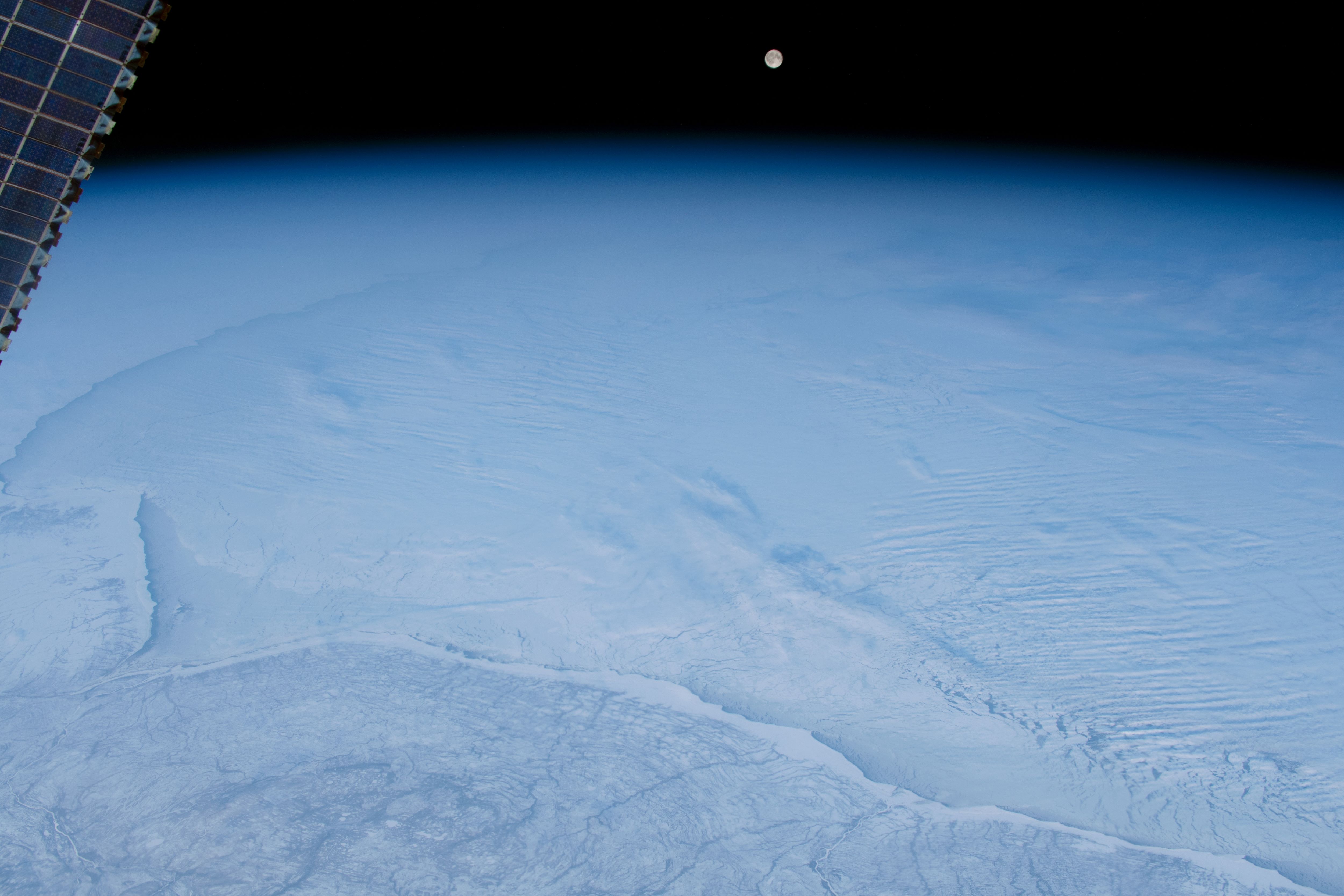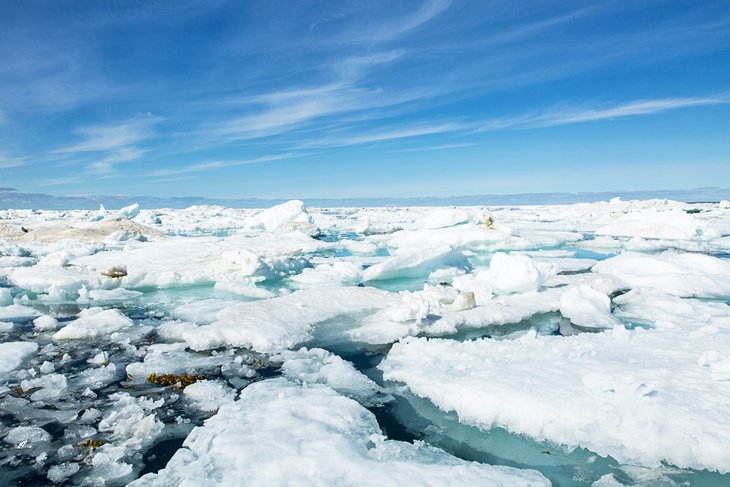[:ja]宇宙飛行士がISSから撮影したカナダのハドソン湾です。凍てつくハドソン湾に月の出が見えていて幻想的です。

ハドソン湾は、カナダ北東にある面積123万km2におよぶ大きな湾です。湾内にはオタワ諸島、ベルチャー諸島、アキミスキ島など島が多く、多島海の一つです。東はハドソン海峡で大西洋に、北はフォックス海峡とローズウェルカム海峡からフォックス湾などを経て、北極海と繋がっており、国際水路機関(IHO)はハドソン湾を北極海の一部に分類しています。ベルチャー諸島付近の海氷は通常は8月中旬には姿を消します。海氷の存在は、ホッキョクグマなどハドソン湾の生物に与える影響が大きいです。ホッキョクグマは海氷があればアザラシなどを追い、海氷が融解する夏には陸地まで泳いで空腹に耐え、海氷が形成されるのを待ちます。
地上の様子はこちらです。

参考文献: Frozen Moonrise (NASA Earth Observatory)
地球俯瞰画像を見る: LiVEARTH
[Earthview Wonders] No.937: Frozen Hudson Bay🇨🇦
Astronaut on board ISS captured wintry Hudson Bay, Canada. Note a full Moon rising over a frigid Hudson Bay.

Hudson Bay is a large body of saltwater in northeastern Canada with a surface area of 1.2 million km2. The bay is relatively shallow and is considered an epicontinental sea, with an average depth of about 100m. Sea ice can linger on Hudson Bay into the summer, but it is usually gone by mid-August. Also, the rhythms of sea ice play a central role in the lives of the animals of Hudson Bay, particularly polar bears. When the bay is topped with ice, polar bears head out to hunt for seals and other prey. When the ice melts in the summer, the bears swim to shore, where they fast until sea ice returns.
The local scenery on the ground is as follows.

Reference: Frozen Moonrise (NASA Earth Observatory)
See earthview photo gallery: LiVEARTH[:en][Earthview Wonders] No.937: Frozen Hudson Bay🇨🇦
Astronaut on board ISS captured wintry Hudson Bay, Canada. Note a full Moon rising over a frigid Hudson Bay.

Hudson Bay is a large body of saltwater in northeastern Canada with a surface area of 1.2 million km2. The bay is relatively shallow and is considered an epicontinental sea, with an average depth of about 100m. Sea ice can linger on Hudson Bay into the summer, but it is usually gone by mid-August. Also, the rhythms of sea ice play a central role in the lives of the animals of Hudson Bay, particularly polar bears. When the bay is topped with ice, polar bears head out to hunt for seals and other prey. When the ice melts in the summer, the bears swim to shore, where they fast until sea ice returns.
The local scenery on the ground is as follows.

Reference: Frozen Moonrise (NASA Earth Observatory)
See earthview photo gallery: LiVEARTH[:]